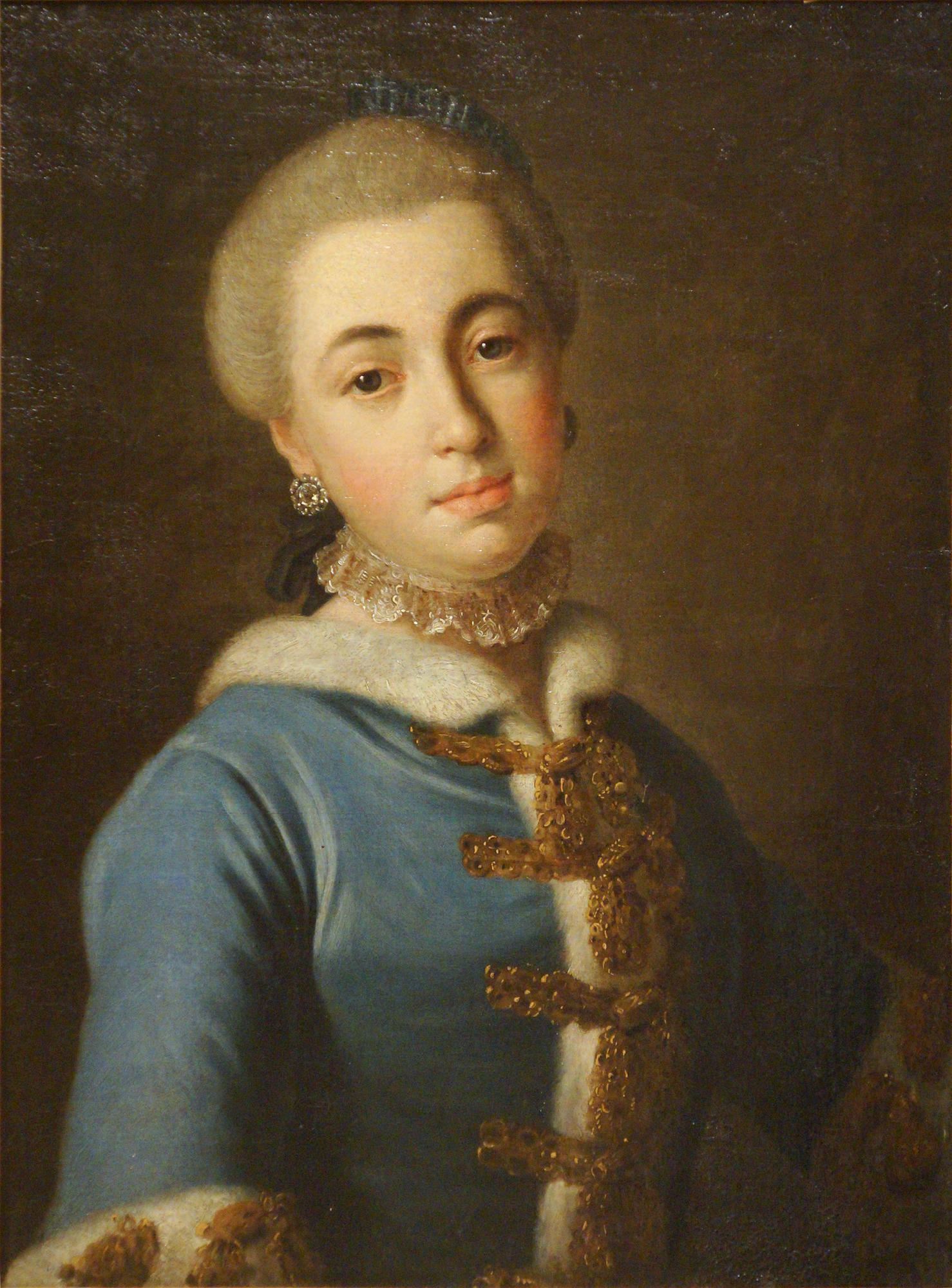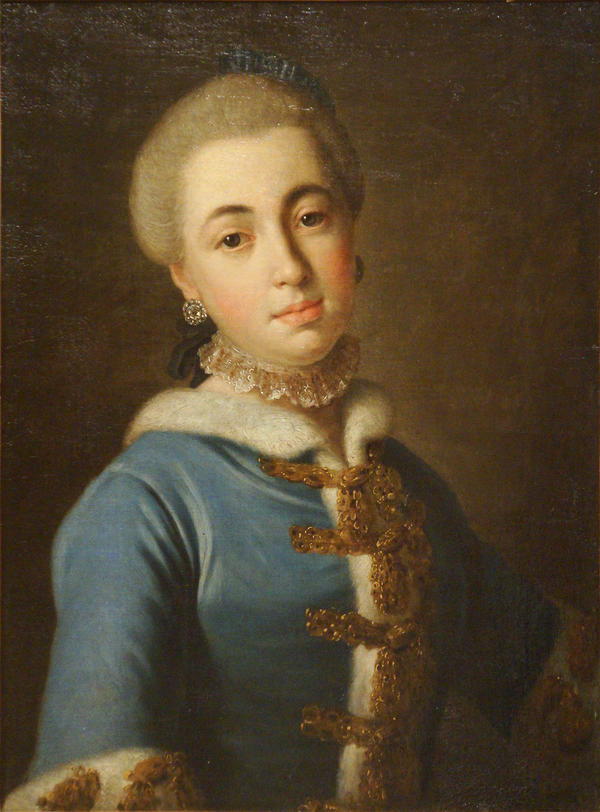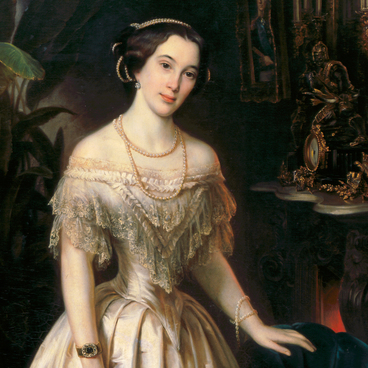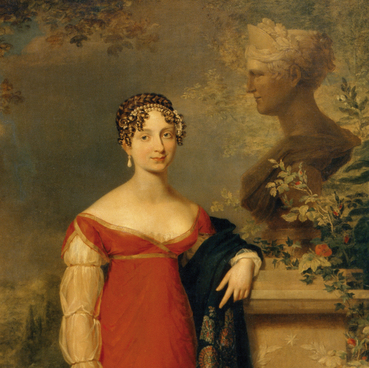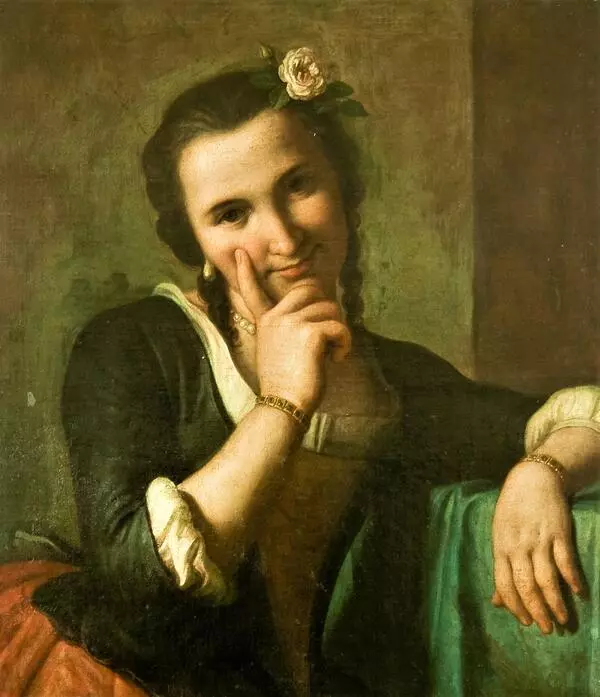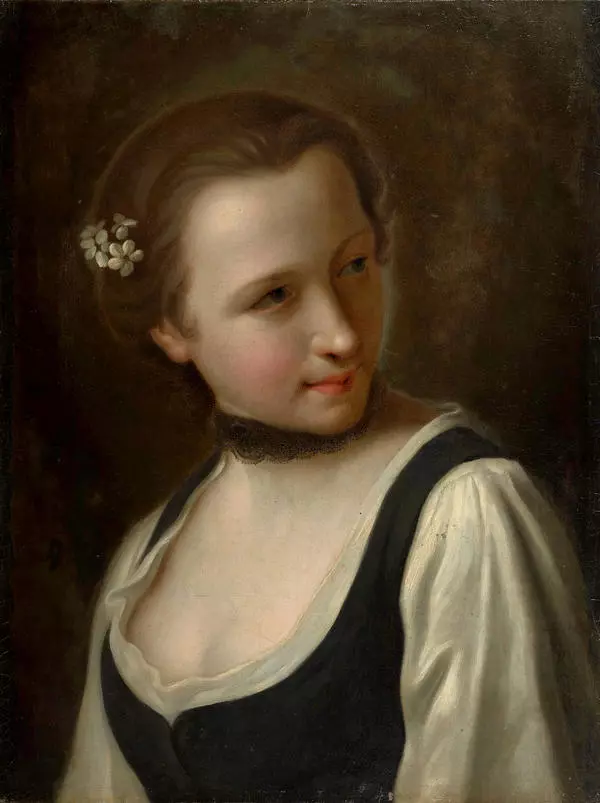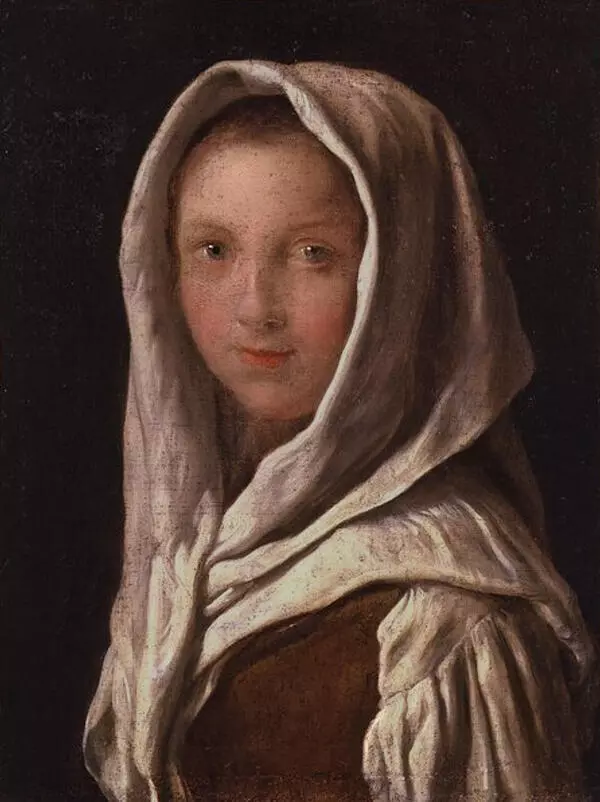Pietro Antonio Rotari, Count De Conte was born in Verona in 1707. In his hometown, he studied painting with Roberto Audenard and Antonio Balestra, and then improved his technique in Rome and Naples. His early works include well-known paintings The Saint Louis, The Nativity of Mary, The Ascension and several images for the Verona Church. The artist worked in Vienna and Dresden for Elector of Saxony August Friedrich III since 1750.
Pietro Rotari came to Russia in 1756 and soon became the favourite artist of Empress Elizabeth Petrovna. Rotari’s activity in Russia was unusually fruitful. The artist created dozens of custom-made court portraits, as well as many so-called “heads” - small portraits of girls in traditional costumes.
In 1757, Rotari became the first teacher of the Russian Academy of Three Noble Arts in St. Petersburg, which was established by Russian statesman and philanthropist Ivan Shuvalov. Among the artist’s students were founder of Russian history painting Anton Losenko, portrait painters Fedor Rokotov and Ivan Argunov.
As early as 1760, Elizaveta Petrovna purchased 50 works from Pietro Rotari, and after his death, Catherine II bought from the artist’s widow all the paintings that remained in the studio. The Empress decided to decorate one of the interiors of the Grand Peterhof Palace with the works by Rotari. In 1764, upon the project of Jean-Baptiste Wallen-Delamotte, the paintings were hung in the hall, which is now called the Picture Hall or the Cabinet of Fashion and Grace. It contains the largest collection of works by the artist: 368 paintings occupy almost the entire area of the walls.
The Portrait, which was painted by Rotari in the second half of the 18th century, is in the permanent exhibition of the museum. On it, the artist portrayed Anna Mikhailovna Stroganova, nee Vorontsova. In the portrait, Pietro Rotari combined ceremonial splendours with the girl’s inner liveliness, rendering her character.
Anna Vorontsova was born on April 13, 1743 in the family of Chancellor Mikhail Vorontsov and Anna Skavronskaya, cousin of Empress Elizabeth Petrovna. At a young age, Anna Vorontsova married a Full Privy Councillor, Lieutenant General Alexander Stroganov. The events that soon followed destroyed family happiness. After the death of Empress Elizabeth Petrovna and the dethronement of Peter III, Vice Chancellor Count Vorontsov, father-in-law of Stroganov, was overthrown too. Anna Mikhailovna, who was a supporter of the overthrown Emperor, left her husband. She chose to live in her father’s house until her death. The countess died in St. Petersburg, she was buried in the Lazarevsky Cemetery at the Alexander Nevsky Lavra.
Pietro Rotari came to Russia in 1756 and soon became the favourite artist of Empress Elizabeth Petrovna. Rotari’s activity in Russia was unusually fruitful. The artist created dozens of custom-made court portraits, as well as many so-called “heads” - small portraits of girls in traditional costumes.
In 1757, Rotari became the first teacher of the Russian Academy of Three Noble Arts in St. Petersburg, which was established by Russian statesman and philanthropist Ivan Shuvalov. Among the artist’s students were founder of Russian history painting Anton Losenko, portrait painters Fedor Rokotov and Ivan Argunov.
As early as 1760, Elizaveta Petrovna purchased 50 works from Pietro Rotari, and after his death, Catherine II bought from the artist’s widow all the paintings that remained in the studio. The Empress decided to decorate one of the interiors of the Grand Peterhof Palace with the works by Rotari. In 1764, upon the project of Jean-Baptiste Wallen-Delamotte, the paintings were hung in the hall, which is now called the Picture Hall or the Cabinet of Fashion and Grace. It contains the largest collection of works by the artist: 368 paintings occupy almost the entire area of the walls.
The Portrait, which was painted by Rotari in the second half of the 18th century, is in the permanent exhibition of the museum. On it, the artist portrayed Anna Mikhailovna Stroganova, nee Vorontsova. In the portrait, Pietro Rotari combined ceremonial splendours with the girl’s inner liveliness, rendering her character.
Anna Vorontsova was born on April 13, 1743 in the family of Chancellor Mikhail Vorontsov and Anna Skavronskaya, cousin of Empress Elizabeth Petrovna. At a young age, Anna Vorontsova married a Full Privy Councillor, Lieutenant General Alexander Stroganov. The events that soon followed destroyed family happiness. After the death of Empress Elizabeth Petrovna and the dethronement of Peter III, Vice Chancellor Count Vorontsov, father-in-law of Stroganov, was overthrown too. Anna Mikhailovna, who was a supporter of the overthrown Emperor, left her husband. She chose to live in her father’s house until her death. The countess died in St. Petersburg, she was buried in the Lazarevsky Cemetery at the Alexander Nevsky Lavra.
